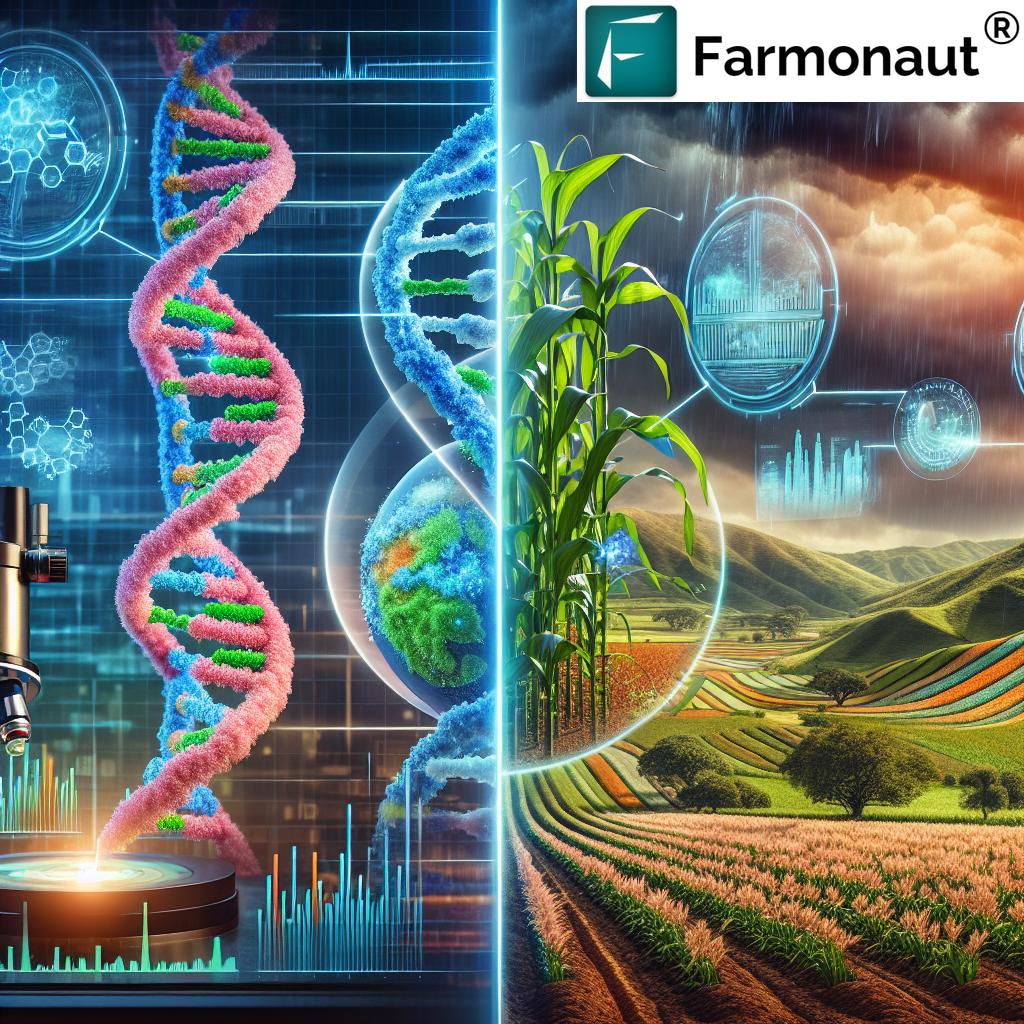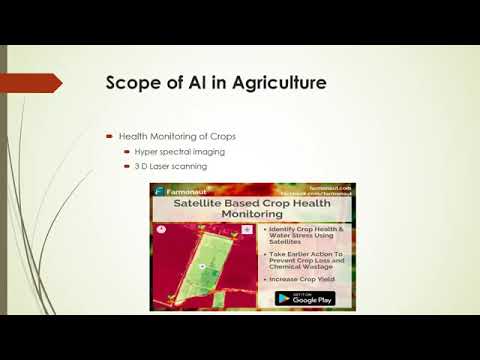Revolutionizing Australian Agriculture: Gene Editing Innovations for Sustainable Crop Production
“Gene editing techniques can develop crop varieties up to 10 times faster than traditional breeding methods.”
Welcome to the cutting edge of agricultural innovation! We’re excited to explore how gene editing is transforming crop production in Australia and beyond. As we delve into this fascinating topic, we’ll uncover the latest advancements in agricultural technology and their potential to reshape the future of farming.

Gene Editing in Agriculture: A Game-Changer for Australian Farmers
In recent years, gene editing has emerged as a powerful tool in the agricultural sector, offering unprecedented opportunities for crop improvement. This innovative technology is particularly promising for Australian growers, who face unique challenges due to the country’s diverse climatic conditions and the need for sustainable farming practices.
Gene editing in agriculture involves making precise changes to a plant’s DNA to enhance desirable traits or remove undesirable ones. Unlike traditional genetically modified organisms (GMOs), gene editing typically works within a plant’s existing genome, making it a more targeted and efficient approach to crop breeding.
The Promise of Gene Editing for Australian Crops
- Enhanced drought resistance for arid regions
- Improved salt tolerance for coastal areas
- Increased nutrient content in staple crops
- Pest and disease resistance to reduce chemical inputs
These advancements are particularly crucial for Australia’s agricultural industry, which contributes significantly to the country’s economy and food security. By harnessing gene editing technologies, we can develop crop varieties that are better suited to Australia’s unique growing conditions, from the tropical north of Queensland to the Mediterranean climate of the south.
Gene Editing vs. GMOs: Understanding the Difference
It’s essential to distinguish between gene editing and genetic modification, as these terms are often confused. Let’s break down the key differences:
| Aspect | Gene Editing | GMOs |
|---|---|---|
| Definition | Precise modification of existing genes | Introduction of foreign DNA |
| Technique | CRISPR, TALENs, Zinc Finger Nucleases | Transgenic methods |
| Precision | High | Variable |
| Time to develop | 2-3 years | 5-10 years |
| Regulatory status in Australia | Generally less regulated | Strictly regulated |
| Consumer perception | Generally more accepted (estimated 60-70%) | Mixed acceptance (estimated 30-40%) |
| Examples of traits improved | Drought tolerance, disease resistance | Herbicide resistance, insect resistance |
| Potential for climate resilience | High | Moderate |
| Nutritional enhancements | Targeted improvements (e.g., vitamin content) | Broader modifications |
| Integration with AI-driven breeding | Highly compatible | Less integration potential |
As we can see, gene editing offers a more precise and potentially faster route to crop improvement, which is particularly valuable in the face of rapidly changing climate conditions and growing global food demand.
Weather-Resilient Crop Varieties: A Necessity for Australian Agriculture
Australia’s climate is notoriously variable, with severe droughts, floods, and bushfires posing significant challenges to farmers. Gene editing technologies are paving the way for the development of weather-resilient crop varieties that can withstand these extreme conditions.
- Drought-tolerant wheat varieties
- Heat-resistant barley
- Flood-tolerant rice
- Frost-resistant fruits
These innovations are not just theoretical; they’re becoming a reality in Australian fields. For instance, researchers at the University of Queensland are using gene editing to develop wheat varieties that can thrive in drought conditions, a crucial advancement for Australia’s grain industry.
Explore how Farmonaut’s satellite technology is revolutionizing land use in agriculture. Try our web app to see these innovations in action!

Vitamin-Enhanced Crop Varieties: Boosting Nutritional Value
Gene editing isn’t just about improving crop resilience; it’s also enhancing the nutritional value of our food. Australian scientists are at the forefront of developing vitamin-enhanced crop varieties that could have a significant impact on public health.
- Golden bananas enriched with pro-vitamin A
- High-iron wheat
- Tomatoes with increased lycopene content
These nutritionally enhanced crops could play a crucial role in addressing micronutrient deficiencies, not just in Australia but globally. The potential for exporting these high-value crops also presents new economic opportunities for Australian farmers.
AI-Driven Plant Breeding: Accelerating Innovation
The integration of artificial intelligence (AI) with gene editing technologies is revolutionizing plant breeding. AI algorithms can analyze vast datasets of genetic information, environmental conditions, and crop performance to predict which genetic modifications are most likely to yield desired traits.
This synergy between AI and gene editing is particularly beneficial for Australian agriculture, where the diversity of growing conditions requires a nuanced approach to crop development. AI-driven breeding can help identify gene edits that will produce crops tailored to specific regions, from the tropical north to the temperate south.
Discover how AI is transforming agriculture. Access Farmonaut’s cutting-edge AI solutions through our API or API Developer Docs.
Agricultural Innovation Technologies: Beyond Gene Editing
While gene editing is a groundbreaking technology, it’s just one piece of the puzzle in revolutionizing Australian agriculture. A suite of agricultural innovation technologies is working in concert to transform farming practices:
- Precision agriculture using GPS and satellite imaging
- IoT sensors for real-time crop and soil monitoring
- Drone technology for crop assessment and targeted treatments
- Big data analytics for farm management decisions
These technologies complement gene editing by providing the data and precision needed to optimize crop growth and resource use. For example, satellite-based crop monitoring can help farmers identify areas where gene-edited, drought-resistant crops are performing best, allowing for more targeted planting strategies.
“Satellite-based crop monitoring can increase farm productivity by up to 20% through precise resource management.”

Sustainable Agriculture Techniques: Integrating Gene Editing
Gene editing is not just about creating “super crops”; it’s about developing plants that can thrive in sustainable farming systems. In Australia, where water scarcity and soil degradation are ongoing challenges, gene-edited crops are being developed to support sustainable agriculture techniques:
- Water-efficient crops for dryland farming
- Nitrogen-fixing cereals to reduce fertilizer use
- Salt-tolerant varieties for saline soils
- Plants with enhanced carbon sequestration capabilities
These innovations align with Australia’s commitment to sustainable agriculture and could help the country meet its environmental goals while maintaining agricultural productivity.
See how Farmonaut’s precision crop area estimation is revolutionizing agriculture. Download our mobile apps for on-the-go farm management:


The Regulatory Landscape for Genome-Edited Foods in Australia
As gene editing technologies advance, so too does the regulatory framework surrounding them. In Australia, the Office of the Gene Technology Regulator (OGTR) oversees the development and release of genetically modified organisms, including those created through gene editing.
Recent updates to regulations have exempted some gene-edited organisms from GM regulation, provided they do not contain foreign genetic material. This change has opened up new possibilities for Australian researchers and breeders, potentially accelerating the development of improved crop varieties.
Consumer Education and Acceptance
Despite the potential benefits of gene-edited crops, consumer acceptance remains a crucial factor in their successful adoption. The Australian agricultural industry is working to educate consumers about the differences between gene editing and traditional GMOs, emphasizing the precision and potential benefits of gene editing technologies.
- Transparency in labeling and marketing
- Public engagement through farm open days and educational programs
- Collaboration with consumer advocacy groups
By fostering open dialogue and providing clear information, the industry aims to build trust and acceptance of gene-edited products among Australian consumers.
The Global Context: Australia’s Role in Agricultural Innovation
Australia’s advancements in gene editing and agricultural technology have implications beyond its borders. As a major agricultural exporter, Australia has the potential to contribute significantly to global food security through the development of resilient and nutritious crop varieties.
Moreover, Australia’s unique growing conditions make it an ideal testing ground for crops that can withstand climate extremes – knowledge that could be invaluable as other regions face increasing climate challenges.
The Future of Crop Production: Integrating Multiple Technologies
As we look to the future of crop production in Australia, it’s clear that gene editing will play a crucial role. However, its true potential will be realized when integrated with other cutting-edge technologies:
- AI and machine learning for predictive breeding
- Blockchain for supply chain transparency
- Robotics for automated planting and harvesting
- Advanced imaging technologies for real-time crop monitoring
This integrated approach to agricultural innovation promises to create a more resilient, productive, and sustainable farming sector in Australia and beyond.
Conclusion: A New Era for Australian Agriculture
Gene editing innovations are ushering in a new era for Australian agriculture, offering solutions to long-standing challenges and opening up new possibilities for crop improvement. From drought-resistant wheat to nutrient-enhanced fruits and vegetables, these technologies have the potential to transform the way we grow food.
As we embrace these advancements, it’s crucial to continue engaging with all stakeholders – farmers, consumers, regulators, and researchers – to ensure that the benefits of gene editing are realized responsibly and sustainably.
The future of Australian agriculture is bright, powered by gene editing and a suite of complementary technologies. By staying at the forefront of these innovations, Australia can continue to be a global leader in sustainable and productive agriculture.
FAQ Section
Q: What is gene editing in agriculture?
A: Gene editing in agriculture is a precise method of making targeted changes to a plant’s DNA to enhance desirable traits or remove undesirable ones, without introducing foreign genetic material.
Q: How does gene editing differ from GMOs?
A: Gene editing typically works within a plant’s existing genome, making precise modifications, while GMOs often involve introducing foreign DNA. Gene editing is generally more precise and can be developed more quickly.
Q: What are some potential benefits of gene-edited crops for Australian farmers?
A: Benefits include drought and disease resistance, improved nutritional content, better adaptation to climate change, and potentially reduced need for chemical inputs.
Q: Are gene-edited foods regulated in Australia?
A: Yes, gene-edited organisms are regulated by the Office of the Gene Technology Regulator (OGTR). Some gene-edited organisms that do not contain foreign genetic material are exempt from GM regulations.
Q: How can gene editing contribute to sustainable agriculture?
A: Gene editing can create crops that use water and nutrients more efficiently, resist pests and diseases with less chemical input, and potentially sequester more carbon, all contributing to more sustainable farming practices.

















